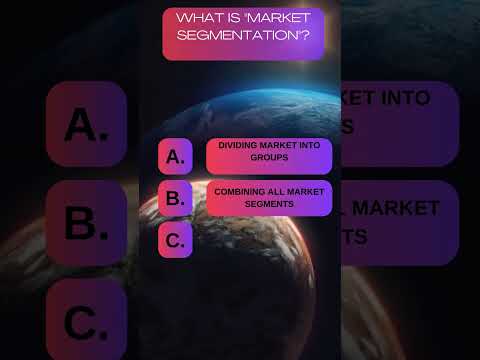Market segmentation is the process of dividing a broad consumer or business market into smaller, more defined groups with similar characteristics or needs. This approach allows companies to tailor their marketing strategies and offerings to better meet the specific needs and preferences of each segment. Here’s a breakdown of how it works:
Identifying Segmentation Criteria: The first step is to determine which criteria will be used to divide the market. Common bases for segmentation include:
Demographic: Age, gender, income, education, occupation, etc.
Geographic: Region, city, climate, population density, etc.
Psychographic: Lifestyle, values, interests, personality traits, etc.
Behavioral: Purchase behavior, brand loyalty, usage frequency, benefits sought, etc.
Creating Segments: Once criteria are chosen, the market is analyzed and divided into distinct segments. For instance, a company might segment the market based on age, creating different groups such as teenagers, young adults, and seniors.
Profiling Segments: Each segment is then profiled to understand its characteristics, needs, and behaviors. This involves gathering data and insights about each group to tailor marketing strategies effectively.
Targeting: After profiling, businesses decide which segments to target. This involves evaluating the attractiveness of each segment based on factors like size, growth potential, and competition. Companies might choose to target one or multiple segments depending on their resources and goals.
Positioning: The final step is to develop and communicate a value proposition that resonates with the targeted segments. This means creating marketing messages, products, and services that appeal specifically to the needs and desires of each segment.
By focusing on specific segments, companies can more effectively meet customer needs, improve customer satisfaction, and optimize their marketing efforts. This targeted approach often leads to better resource allocation and a stronger competitive advantage.












